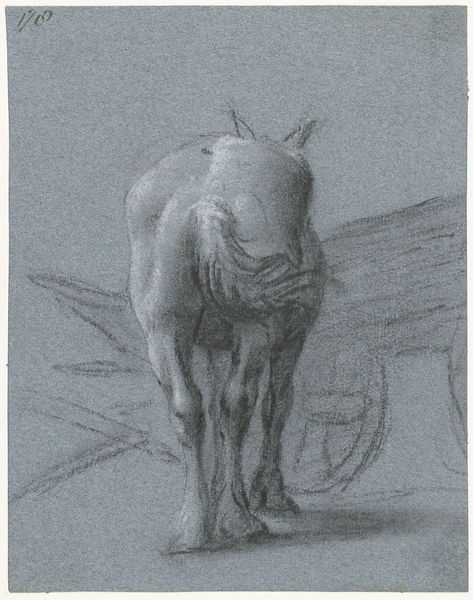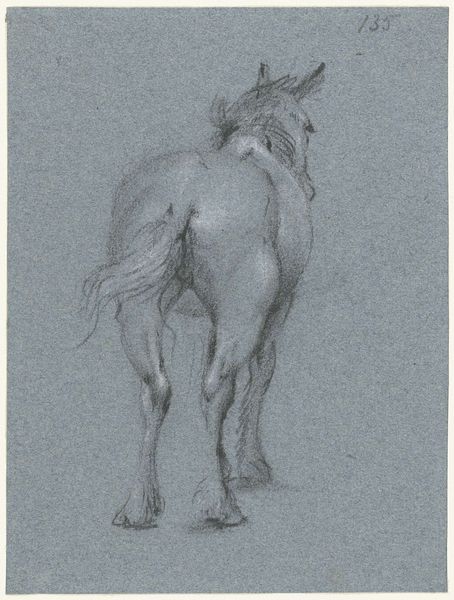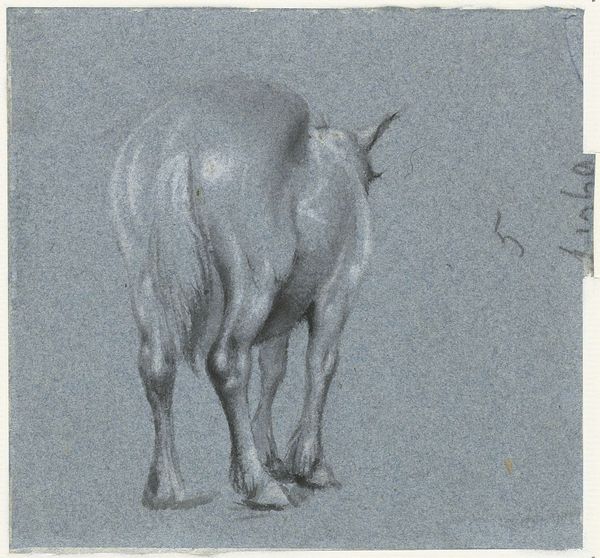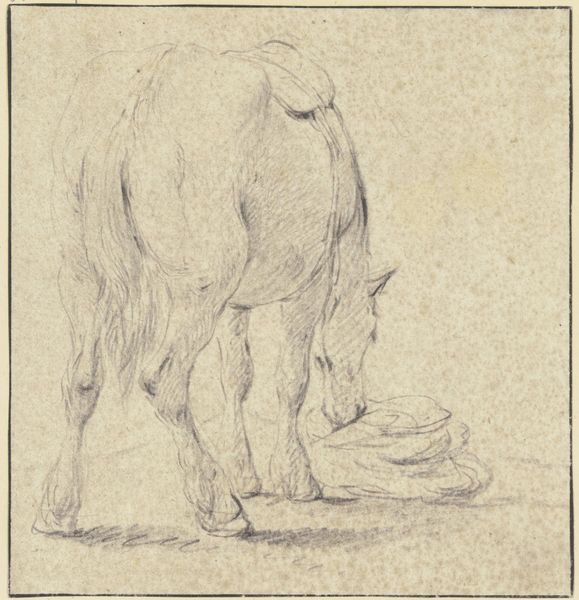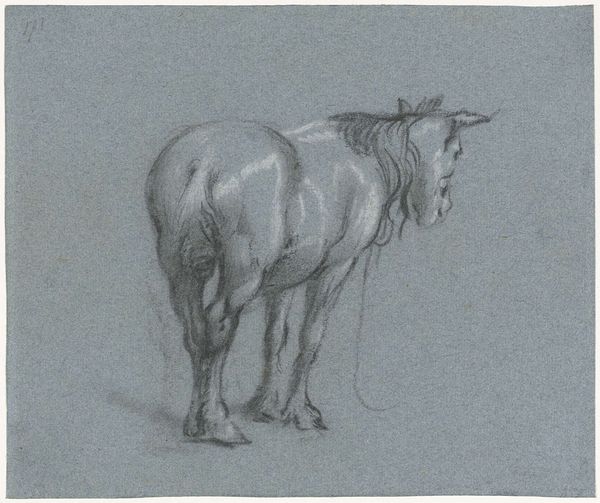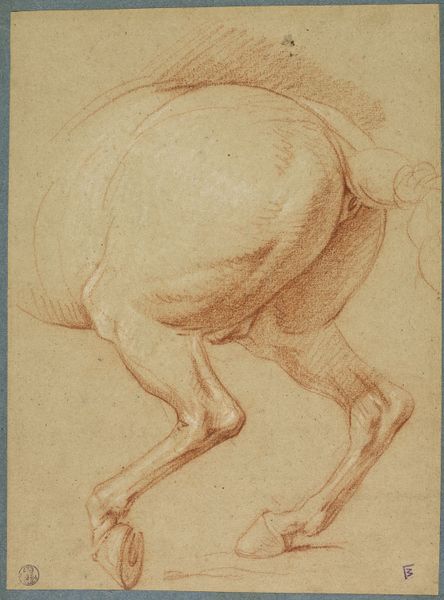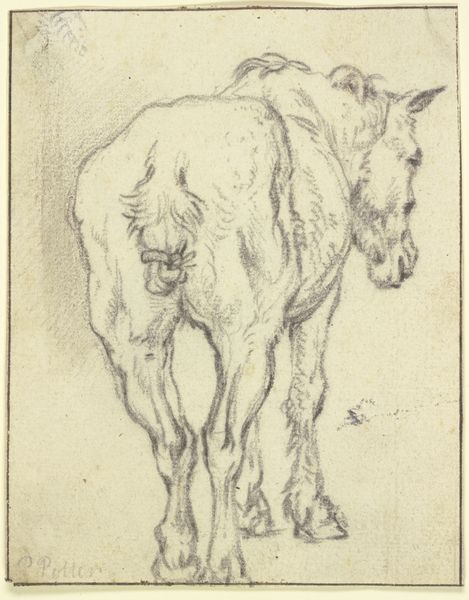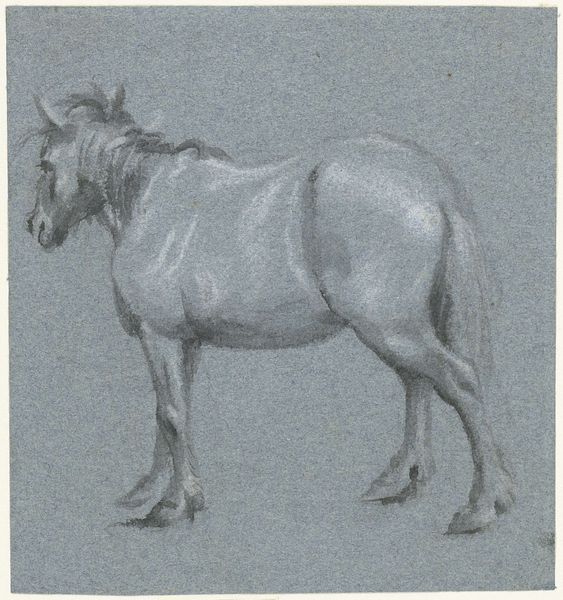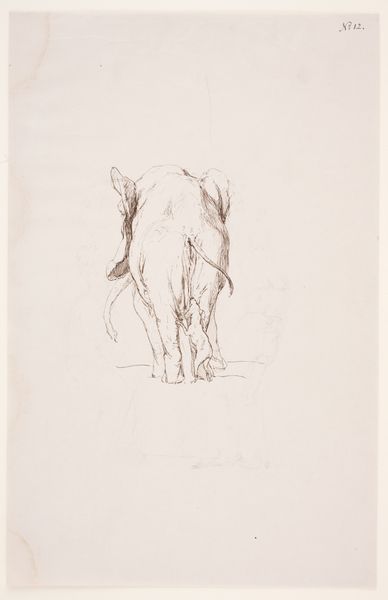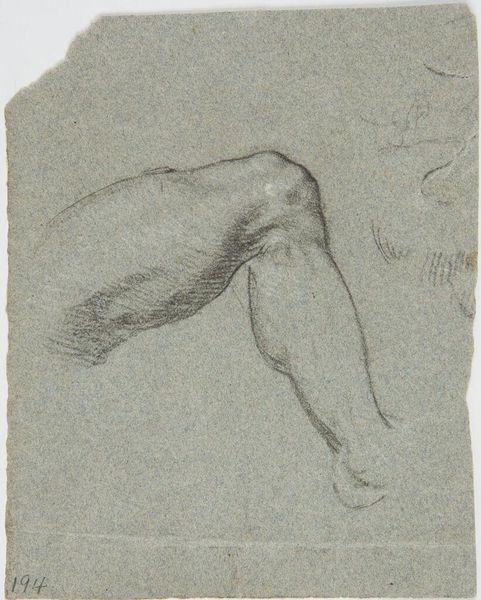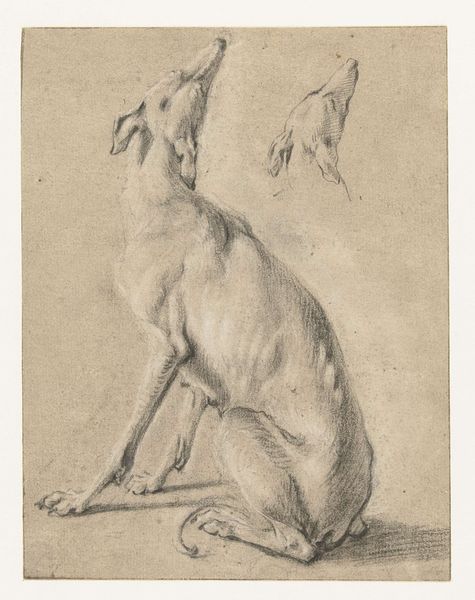
drawing, paper, pencil
#
drawing
#
animal
#
paper
#
pencil drawing
#
pencil
#
line
#
realism
Dimensions: height 142 mm, width 111 mm
Copyright: Rijks Museum: Open Domain
Moses ter Borch made this drawing, ‘Study of the Hindquarters of a Horse’, sometime in the mid-17th century using graphite on paper. Graphite pencils give you incredibly subtle control over the range of light and shadow, and that’s really what this drawing is about. Ter Borch is concerned with rendering the way that light falls across the muscular form of the horse, capturing its volume. But why this view? We see just the rear end. Well, horses at this time were essential to nearly all forms of labor: transportation, agriculture, and of course, military activity. This wasn't just an animal, it was a mode of production. The humble materials of paper and pencil give us a glimpse into the working life of the 17th century. It underscores how close the relationship between humans and animals were, and how crucial to society. So even a quick sketch like this can tell a big story.
Comments
No comments
Be the first to comment and join the conversation on the ultimate creative platform.

